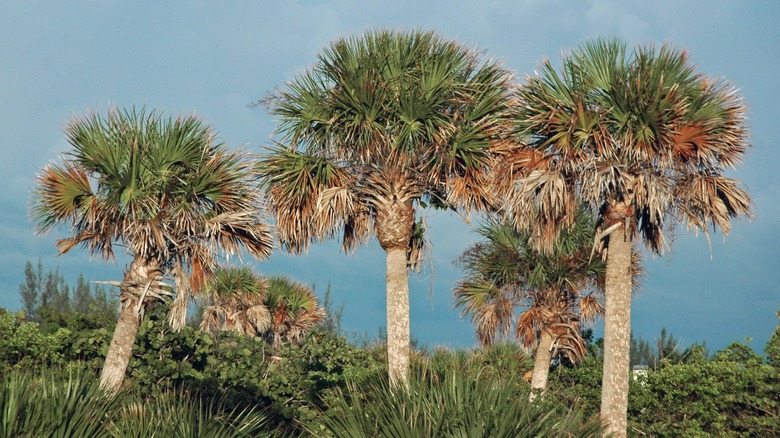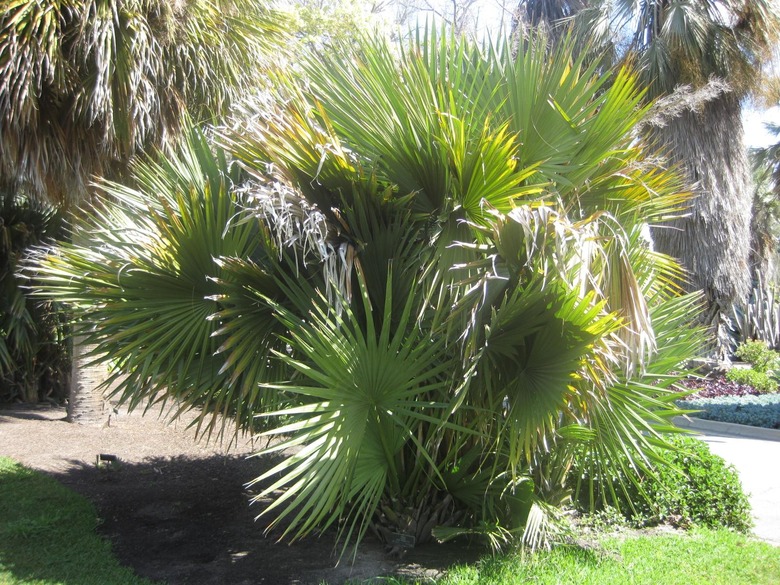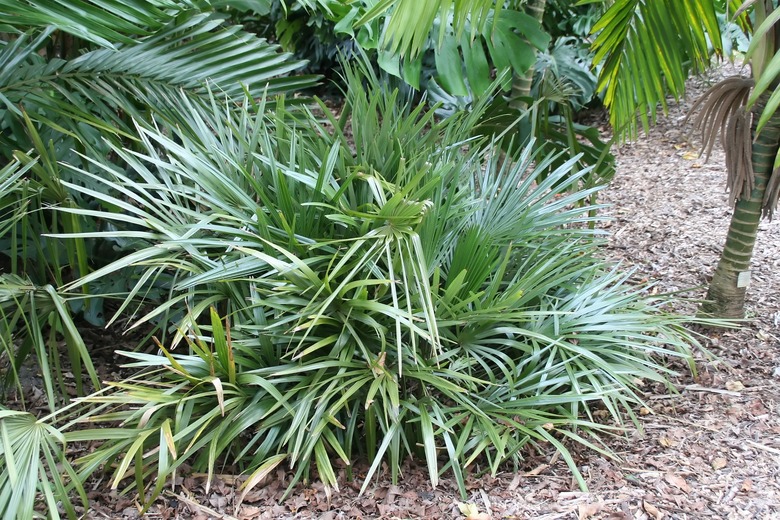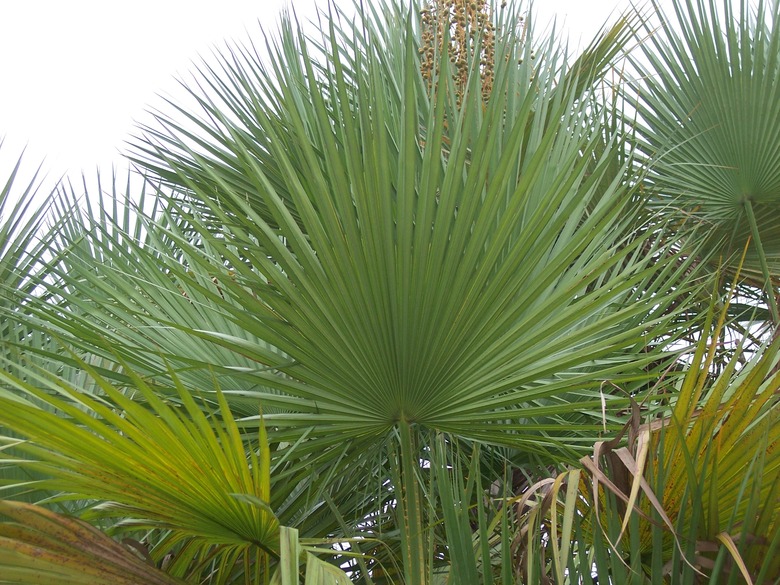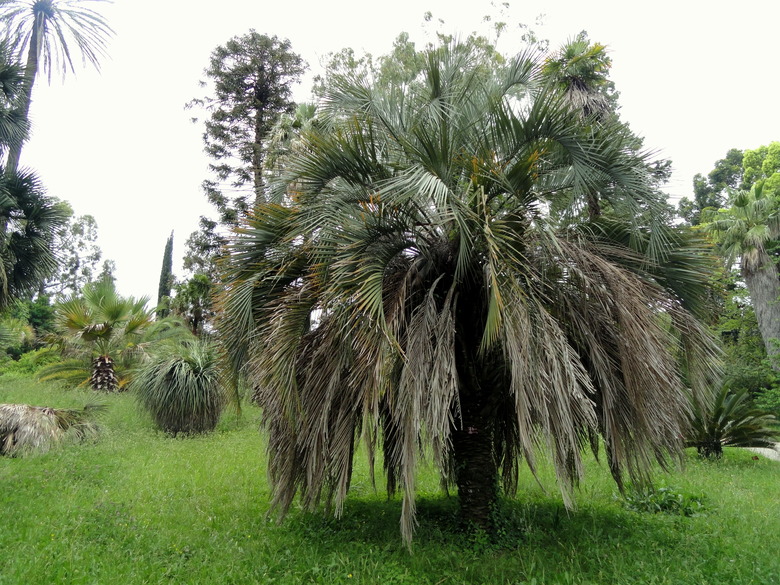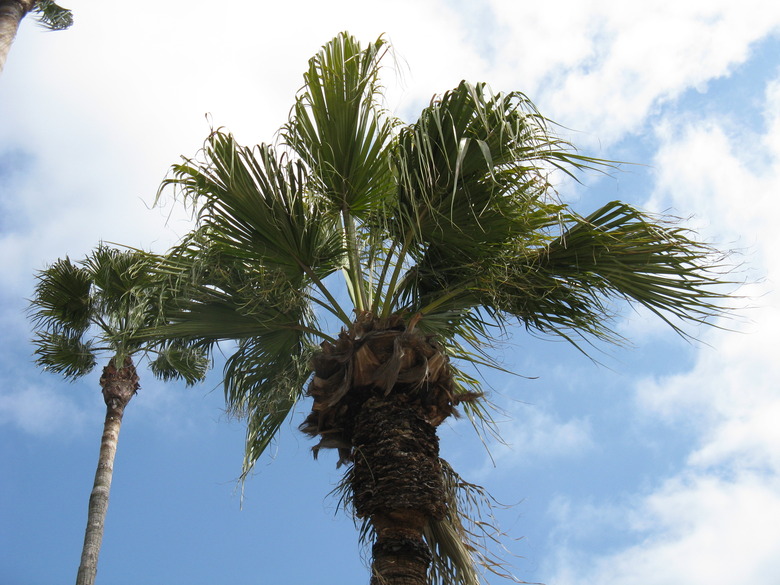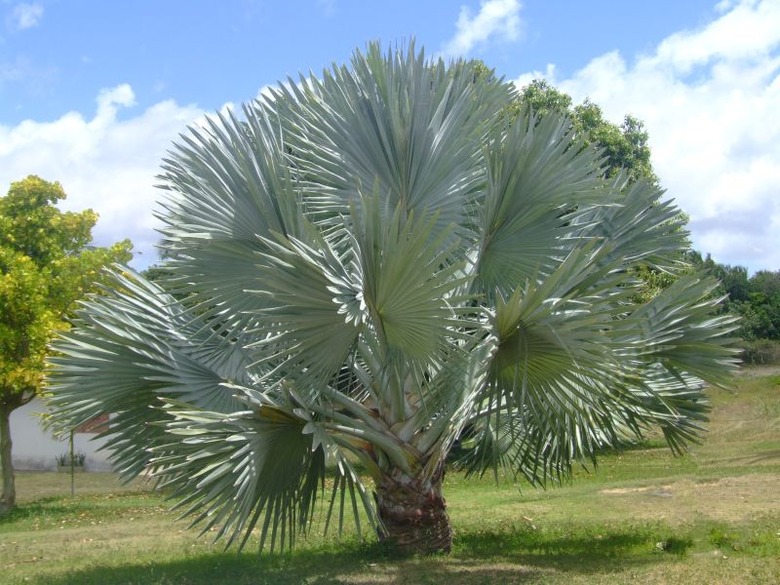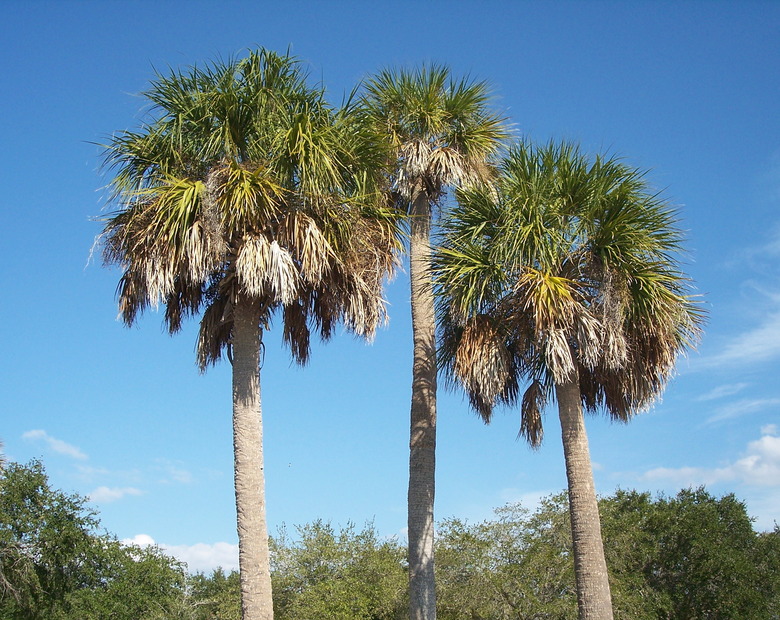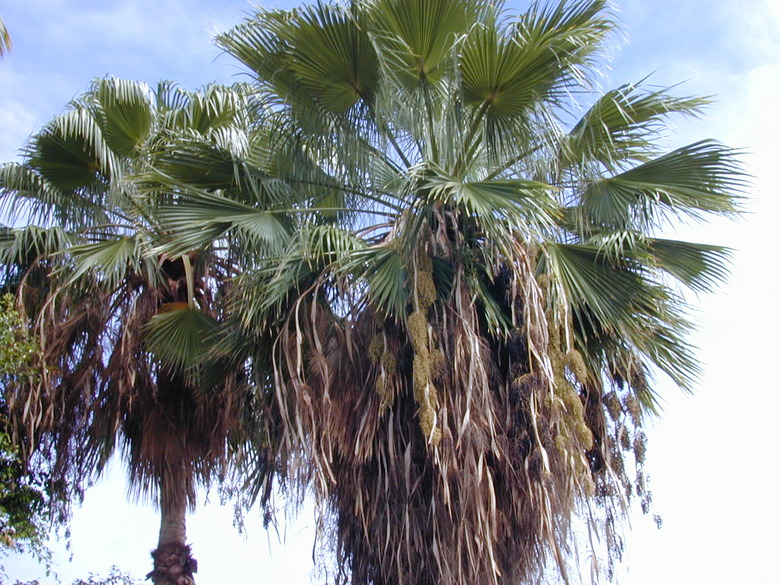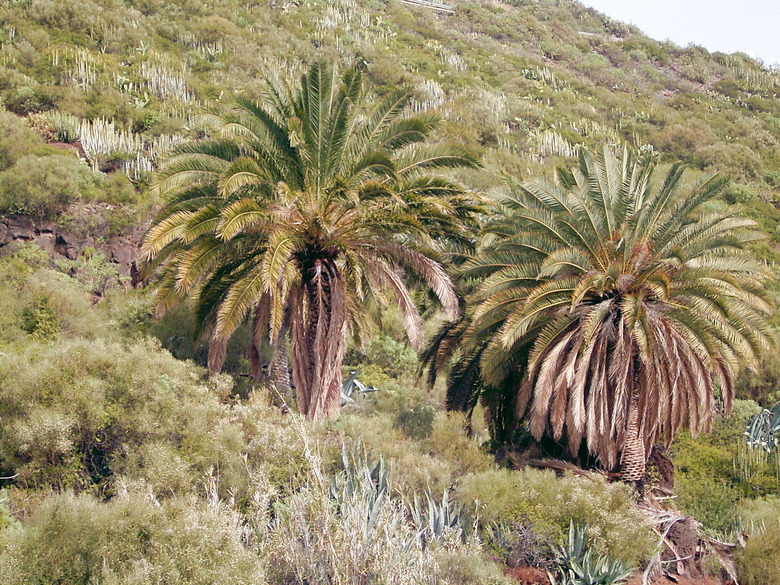What Are The Palm Tree Types In Central Florida?
Many different types of palm trees, both native and non-native, are grown in central Florida. These palm trees come in a wide variety of heights. Some of the smaller palm trees form clumps, while other tall palms have a single trunk.
Most palm tree types in central Florida perform best in fertile, well-draining soils and full sun, though some prefer the shade and a few can handle wet conditions.
Small Central Florida Palm Trees
A number of small palms that rarely exceed 10 feet in height grow in central Florida. Many are native species. Here are some options to choose from.
Dwarf Palmetto
The dwarf palmetto (Sabal minor, zones 7 to 10) is a shrub-like palm tree native to Florida. Its trunk grows underground, so the plant typically has heights between 4 and 6 feet.
The dwarf palmetto produces panicles of yellowish-white flowers in June and July. This palm does better in partial shade than in full sun.
Needle Palm
If you are looking for a hardy palm for central Florida, consider the needle palm (Rhapidophyllum hystrix, zones 6 to 10), a native species that has divided palmate leaves. This palm also does best in part shade. When using the needle palm in Florida landscaping, note that it has 6-inch spines that protrude from the leaf sheaths.
Medium-Sized Central Florida Palms
Let's look at some palm tree varieties in Florida that have typical heights between 10 and 20 feet.
Paurotis Palm
The paurotis palm (Acoelorrhaphe wrightii, zones 9 to 12), or Everglades palm, is native to swampy areas of southern Florida and can also be grown in the central part of the state. This is a clump-forming species with heights between 15 and 20 feet. The leaf stalks have thorns.
If you are growing a paurotis palm, note that it is very sensitive to soil pH and must be grown in slightly alkaline soil to do well.
Pindo Palm
The pindo palm (Butia capitata, zones 9 to 11) is native to Brazil and other parts of South America. It has typical heights of about 15 feet in central Florida.
The pindo palm has grayish-green leaves, or fronds, that may sometimes be dark green or silvery-blue in color.
Medium to Large Palms
Some palm trees in Florida have heights between 20 and 40 feet, though they can grow taller. These are some examples.
Chinese Fan Palm
The Chinese fan palm (Livistona chinensis, zones 9b to 11) is a slow-growing species that has heights of about 30 feet in central Florida. It can take many years for these trees to grow a trunk. The tips of the 6-foot-long fan-shaped leaves on mature specimens of this palm tree droop, giving the tree a graceful appearance.
This species produces fruit that is eaten by birds that spread the seeds, which germinate easily. Therefore, the Chinese fan palm can be invasive in Florida.
The Chinese fan palm is a drought-tolerant species and is also somewhat salt tolerant. If grown as a houseplant, be sure to choose a large enough pot to accommodate its taproot.
Bismarck Palm
Native to Madagascar, the Bismarck palm (Bismarckia nobilis, zones 10 to 11) is barely hardy in central Florida, but can survive in this part of the state with winter protection.
While it can exceed 70 feet in height in the wild, in cultivation it has typical heights of between 30 and 40 feet.
Large Central Florida Palms
Central and south Florida are also home to towering palm trees capable of exceeding 40 feet in height. Let's look at a few of these species.
Cabbage Palm
The state tree of Florida is the cabbage palm (Sabal palmetto, zones 7 to 11), which grows throughout the state. It has heights of about 40 feet and can grow even taller. The curved palm leaves are shaped like fans and have individual blades that may be up to 4 feet long.
The immature leaves of the cabbage palm are edible and have a flavor reminiscent of cabbage, hence the common name of this species of palm. This tree has a single trunk.
Mexican Fan Palm
Native to Mexico, the Mexican fan palm (Washingtonia robusta, zones 9 to 11) is a fast-growing palm that can reach heights of up to 80 feet and is therefore not a good option for residential plantings. This species has naturalized in Florida, as well as Texas, California and Hawaii.
The aging, old leaves of the Mexican fan palm do not fall off , but rather fall over and remain on the tree, creating the appearance of the trunk. The fronds of this species may suffer damage when exposed to temperatures at or below 20°F.
Canary Island Date Palm
The Canary Island date palm (Phoenix canariensis, zones 9 to 11) is another large non-native palm tree grown in central Florida. It has mature heights between 40 and 60 feet, but grows slowly. Unlike other date palms, the 1-inch fruit produced by this tree is not very tasty.
References
- University of Florida IFAS Extension: Ornamental Palms for Central Florida
- Missouri Botanical Garden: Phoenix canariensis
- North Carolina State Extension: Sabal palmetto
- University of Florida IFAS Extension: Sabal Palm
- Missouri Botanical Garden: Butia capitata
- Missouri Botanical Garden: Acoelorrhaphe wrightii
- University of Florida IFAS Extension: Livistona chinensis
- Missouri Botanical Garden: Sabal minor
- Missouri Botanical Garden: Rhapidophyllum hystrix
- Missouri Botanical Garden: Bismarckia nobilis
- North Carolina State Extension: Washingtonia robusta
